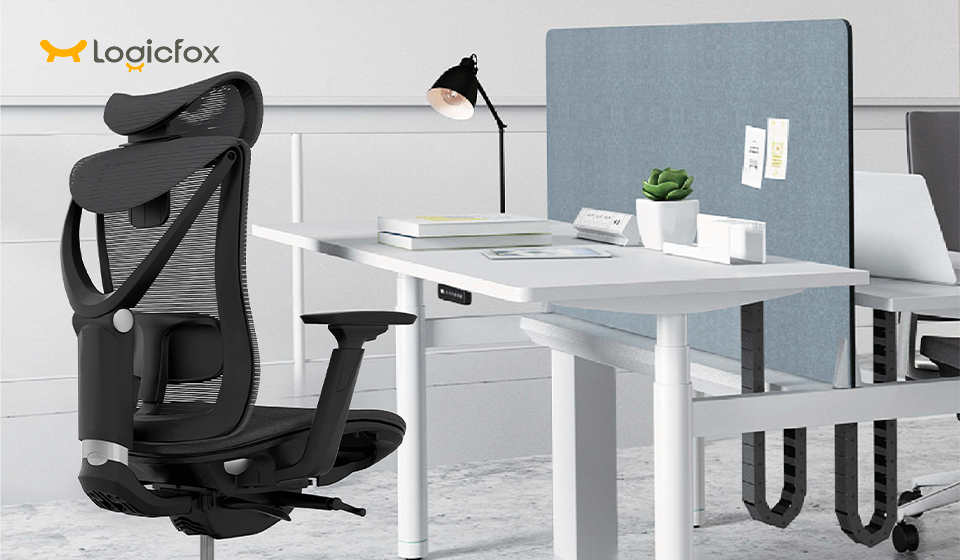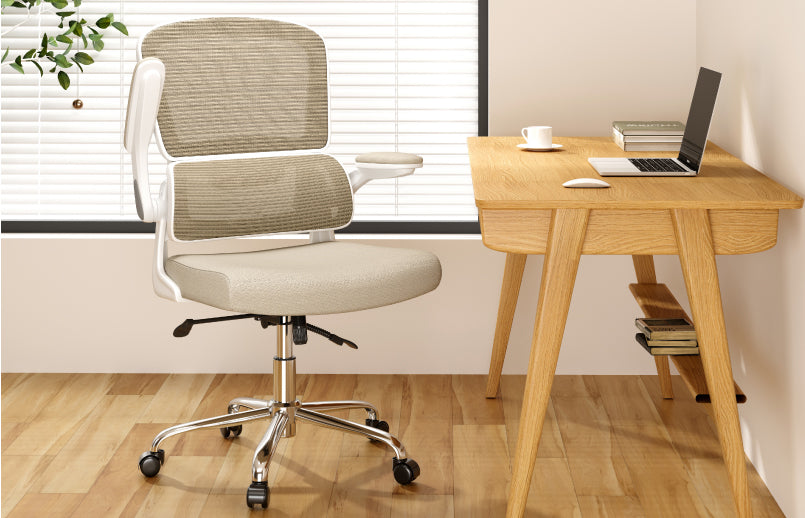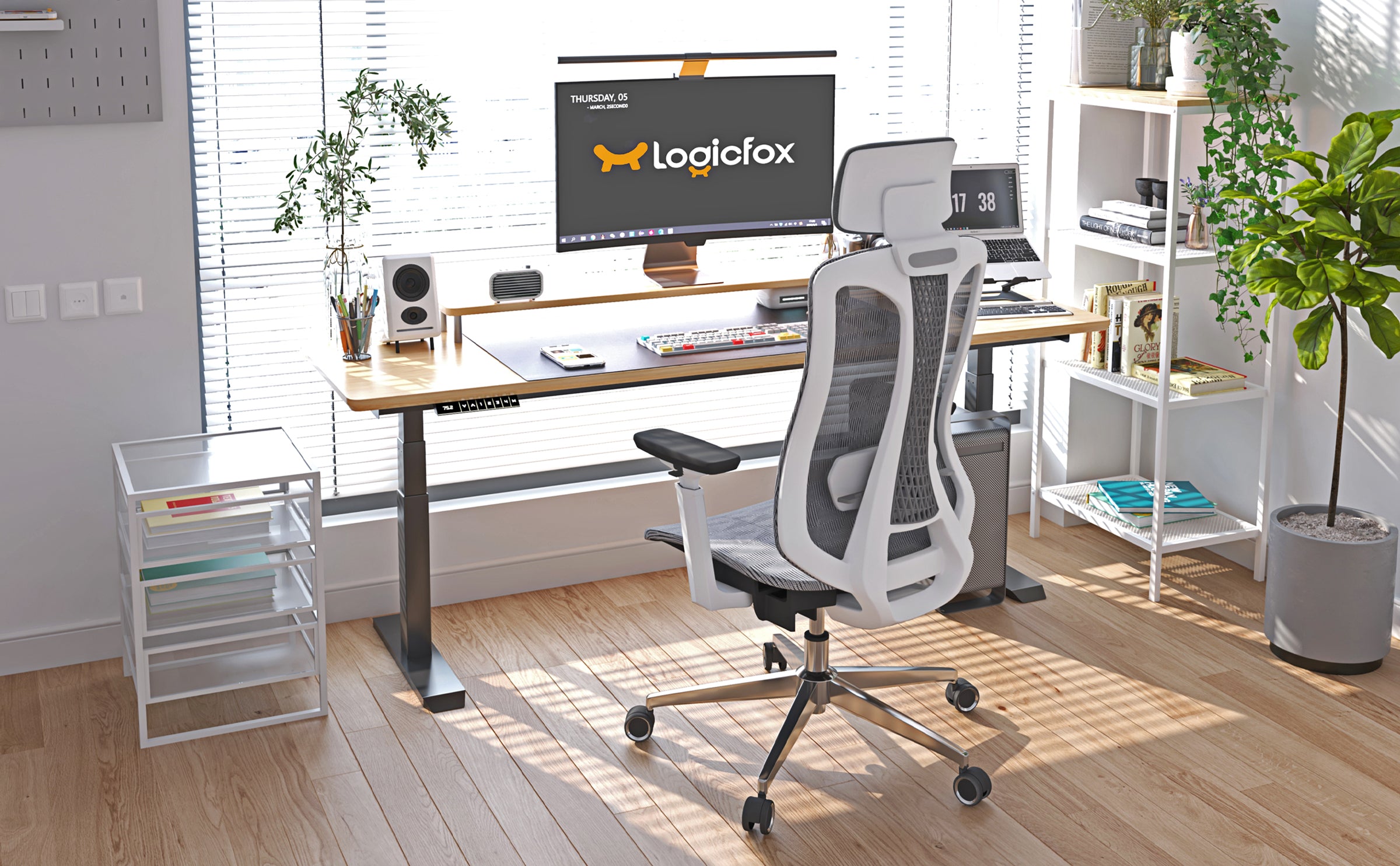
What Defines a Truly Ergonomic Chair?
When it comes to defining a truly ergonomic chair, three key factors come into play: adjustability for personal comfort, ergonomic design for posture support, and materials and build for longevity and comfort.
Adjustability for Personal Comfort
An ergonomically designed chair should be adaptable, like a chameleon, to the unique requirements of its user. Features such as adjustable seat height, armrests, and tilt options are critical. They ensure that individuals of varying body sizes and work preferences can discover their perfect sitting position. This aspect is crucial for those looking into "what makes a chair comfortable" and "how do ergonomic chairs work." For a practical example, consider the Truly Ergonomic Series chairs by Logicfox, which offer an extensive range of adjustment features, providing optimal support and comfort.
For instance, the Truly Ergonomic Series chairs by Logicfox offer a wide range of adjustment features, including tilt lock, which allows users to move the chair to their optimal working position for every task.
Ergonomic Design for Posture Support
The design of an ergonomic chair plays a pivotal role in promoting a natural, healthy posture. Features like lumbar support, essential for lower back health, and a contoured backrest that follows the spine's natural curve are vital. This aspect directly addresses concerns such as "what makes a chair good for your back" and "what ergonomic chair should I buy." A prime example is the Truly Ergonomic Series chairs, which come equipped with adjustable lumbar support and a contoured backrest, ensuring the right balance of support and comfort.
For example, the Truly Ergonomic Series chairs come with adjustable lumbar support and a double-layer seat cushion with memory foam, providing unique comfort.
Materials and Build for Longevity and Comfort
The materials used in a chair, ranging from breathable meshes to robust frames, significantly influence the overall ergonomic experience. This factor is especially crucial for those searching for a "truly office chair" or answers to "what does an ergonomic chair look like," emphasizing durability and comfort for prolonged use. For a detailed understanding, the Ergonomic Mesh Chair vs. Ergonomic Leather Chair blog post by Logicfox offers valuable insights into different material choices and their impact on ergonomics.
For instance, the Truly Ergonomic Series chairs are built with high-quality materials that ensure durability and comfort.
Moreover, the material of the chair also contributes to its longevity. For instance, mesh material is a popular choice for chairs that are used for longer durations due to its breathability. On the other hand, chairs with fabric upholstery are ANSI/BIFMA-rated, ensuring their suitability over a long period of time.
Key Ergonomic Features to Consider
When it comes to selecting the perfect chair for your workspace, it's essential to consider the key ergonomic features that can significantly impact your comfort, productivity, and overall health. Here are some crucial factors to consider:
Height Adjustment
The first feature to consider is height adjustment. The ideal chair should allow for easy adjustment of the seat height, aligning with the concept of "chair height ergonomics." This feature enables a 90-degree elbow angle and proper alignment with the desk, ensuring that your feet are flat on the floor, with thighs horizontal and arms even with the height of the desk.
Armrest and Backrest Adjustability
Next, consider the adjustability of the armrests and backrests. These features cater to different body types and sitting styles, making them crucial for those searching for "ergonomic needs" and "standing chairs with back support." Adjustable armrests allow your arms to rest comfortably, with your shoulders relaxed and your forearms not resting on the armrest while typing. On the other hand, an adjustable backrest supports your back in various sitting positions, enhancing comfort and reducing strain.
Lumbar Support
Lumbar support is another key feature to look for in an ergonomic chair. Effective lumbar support is essential for preventing lower back strain, specifically targeting the "ergonomic needs" query. The lumbar spine has an inward curve, and sitting for long periods without support for this curve can lead to slouching and strain on the lower spine structures. Therefore, an ergonomic chair should have a lumbar adjustment (both height and depth) to support the inward curve of the lower back.
Material Quality
Lastly, addressing queries about "what makes a comfortable chair," the use of high-quality, breathable materials ensures comfort and durability. The material quality of the chair can significantly impact your comfort, especially when sitting for extended periods of time. High-quality materials not only increase comfort but may also improve your seated posture and evenly distribute weight while sitting, reducing seat pressure.
| Key Feature | Importance |
|---|---|
| Height Adjustment | Allows for a 90-degree elbow angle and proper alignment with the desk. |
| Armrest and Backrest Adjustability | Caters to different body types and sitting styles, enhancing comfort and reducing strain. |
| Lumbar Support | Essential for preventing lower back strain and supporting the inward curve of the lower back. |
| Material Quality | Ensures comfort and durability, improves seated posture, and evenly distributes weight while sitting. |
Remember, the goal of an ergonomic chair is to provide maximum comfort, support, and adjustability to meet your unique needs. By considering these key features, you can select a chair that not only meets your "ergonomic needs" but also contributes to a healthier, more productive work environment.
Conclusion
In summary, comprehending what constitutes a truly ergonomic chair is essential in 2024 for choosing the right office furniture. By prioritizing aspects like adjustability, support, and high-quality materials, you're equipped to select a chair that not only meets aesthetic standards but also delivers the vital ergonomic advantages for a healthy and efficient workspace. If you're pondering questions like "which ergonomic chair is best" or "why is an ergonomic chair important," consider exploring Logicfox's collection of ergonomic chairs for a comprehensive range of options that cater to various needs and preferences.

























 United States
United States
Leave a comment